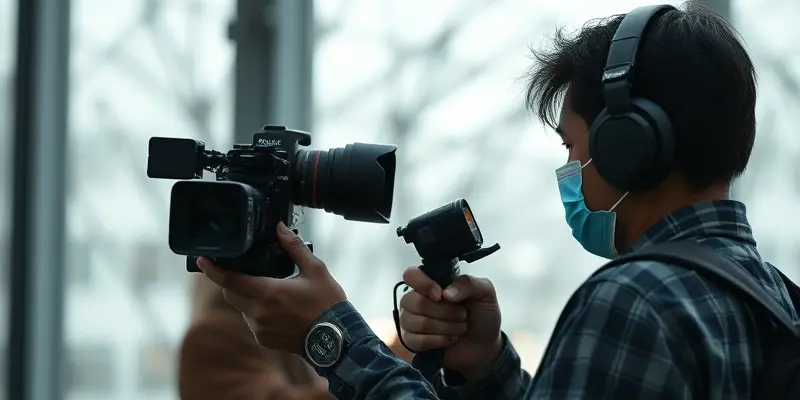Mastering Recovery and Injury Prevention: Your Blueprint for Resilient Training
Staying active is rewarding—but nothing sidelines progress faster than an unexpected injury. Whether you’re a gym newbie, a weekend warrior, or a seasoned athlete, understanding how to prevent injuries and recover effectively is crucial for long-term success.
GymPulse Club brings you expert-backed insights on how to stay in the game, recover faster, and build a stronger, more resilient you.
Why Prioritize Recovery and Injury Prevention?
Ever pushed through a nagging pain, only to end up benched for weeks? Think of your body like a high-performance car—you wouldn’t run it without tune-ups or proper fuel. Regular care reduces breakdowns and boosts your athletic “mileage.”
Focusing on injury prevention and recovery isn’t just for pros; it’s foundational for anyone who loves to move.
Common Sports Injuries (and How They Happen)
Knowing what to watch for is half the battle. Here are some frequent setbacks:
- Sprains and Strains: Often caused by poor technique or skipping warm-ups.
- Joint Injuries (knee, ankle, shoulder): Usually result from overuse, weak support muscles, or incorrect form.
- Muscle Injuries: Fatigue and sudden intense effort top the list of culprits.
- Fractures and Dislocations: More common in contact sports or after a fall.
- Achilles Tendon Injuries & Shin Splints: Frequently triggered by sudden training changes or worn-out footwear.
Takeaway: Prevention starts with knowing your risks so you can plan smarter.
Prevention: Building Your Injury-Proof Training Routine
1. Warm Up and Cool Down—Every Time
- Commit to at least 20 minutes of dynamic warm-up before you go hard.
- Cool down with gentle stretching and slower movement for twice as long as your warm-up.
2. Perfect Your Technique and Posture
- Don’t skip learning the right form—even experienced lifters get injured by “bad habits.”
- Use mirrors or consult a coach to keep your technique sharp.
3. Gradual Progression and Rest
- Increase intensity and load slowly (think: the 10% rule).
- Schedule rest days and listen if your body signals pain or fatigue.
4. Use the Right Gear
- Footwear matters—replace shoes regularly and choose models designed for your activity.
- Protective gear (like pads or mouthguards) can be game-changers for high-contact sports.
5. Balance and Proprioception
- Integrate balance exercises (like wobble board or single-leg stands) to boost joint stability—especially for ankles and knees.
Takeaway: Prevention blends preparation, skill, and self-awareness. Make these habits, not afterthoughts.
Recover Smarter, Not Harder: Your Comeback Checklist
Immediate Response—RICE Method
- Rest, Ice, Compression, Elevation: This classic approach works for most minor injuries. Don’t rush back before pain or swelling subsides.
Professional Rehabilitation
- Follow your rehab protocol thoroughly and don’t shortcut your return to activity.
- “Feeling better” isn’t the same as fully healed. Trust the process—re-injury is far more frustrating than a few extra days of rest.
Gradual Return to Training
- Use proven frameworks (like the StaRRt model) to ensure you’re truly ready.
- Start slow, monitor your body for warning signs, and ramp up gradually.
Takeaway: Healing is a journey—not a race. Honor each stage for a confident, strong comeback. For a detailed step-by-step guide, check out our injury recovery checklist.
Support Your Recovery: Nutrition, Tools, and the Mind
Eat to Heal
- Include high-quality protein at every meal for muscle repair.
- Don’t skimp on vitamins C/D, calcium, zinc, and antioxidants—they support healing on a cellular level. Learn more about the benefits of vitamin C immunity athletes, calcium for bone strength, and antioxidants in sports nutrition.
Leverage Recovery Gadgets
- Compression garments can reduce swelling.
- Foam rollers and massage guns boost circulation and ease soreness (think of them as your daily pit crew).
- Try balance boards or resistance bands for proactive injury prevention in your rehab.
Train Your Mindset
- Set realistic, motivating goals to maintain happiness during downtime.
- Use visualization and mindfulness—mental training is as vital as physical. Discover how visualization for healing can accelerate your recovery.
Takeaway: True recovery is holistic. When you nourish body and mind, you bounce back stronger.
Your Injury-Proof Journey Starts Here
Injuries can feel like roadblocks, but with smart prevention and proactive recovery, they become just detours. By blending smart training, good equipment, recovery nutrition, practical tools, and a resilient mindset, you set yourself up for a long, active, and enjoyable fitness journey.
Ready to put these principles into action? Listen to your body, learn as you go, and remember: long-term progress is all about consistency, not shortcuts.
Stay strong, stay smart—see you at GymPulse!

